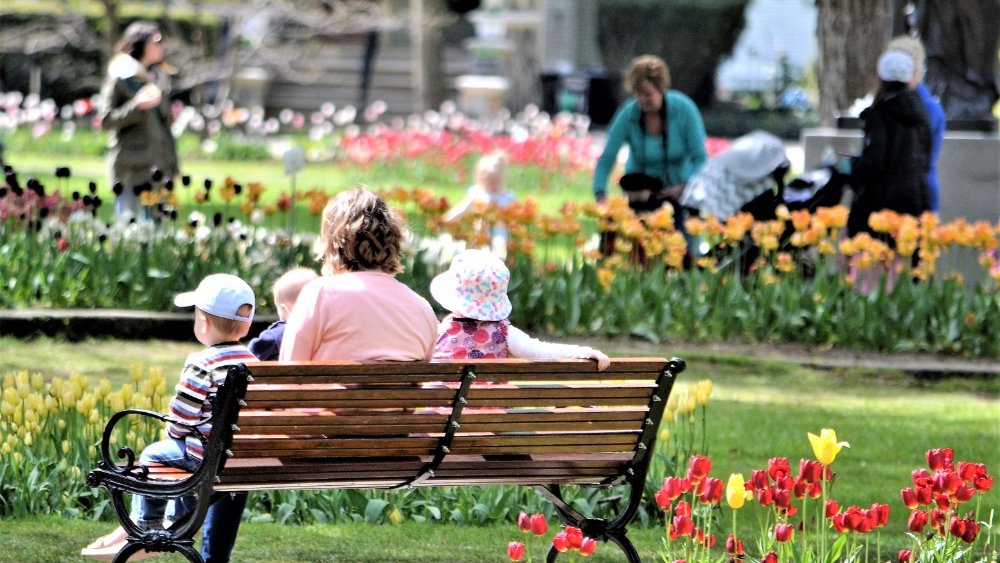This City Is Not Waiting for a Crash To Happen Before Creating a Safer Street
Students of St. Francis Xavier School in Medicine Hat, AB, help monitor a popular crosswalk near the school.
Residents of Medicine Hat, Alberta, are taking steps to ensure child safety along a crosswalk where many students walk to and from school—and they’re not waiting for one (or multiple) car crashes to occur before implementing those steps.
“I think it's important that we're proactive rather than reactive on these things,” said St Francis Xavier school principal Ryan Irving. “We're not waiting for [a crash] to happen before we put [a safer design] in place.”
When it comes to developing safe streets, impactful action from cities tends to get caught up in months of bureaucratic debates. Concerns of impeding the flow of traffic, a need for impact studies, and financial considerations are all angles of conversation that can draw out the design of a safer street for years. This top-down approach delays life-saving action, and more often than not multiple people will have been seriously injured or killed before a city steps in with safety measures.
“I would say even in this country, so often we do wait for that accident to occur, or an issue to arise, and then we deal with it,” said Irving. “But I don't see the benefit of waiting for something to happen. I can't see that helping anybody.”
The story is gradually changing in Medicine Hat. The city is embracing a new way of operating at the local level. They’re aiming to not get caught up in years of debate before creating safer streets. Instead, they’re starting to take immediate, small steps to address citizen concerns.
Each day, children in Medicine Hat use a heavily foot-trafficked crosswalk near St. Francis Xavier school. The crosswalk is especially busy during normal school crossing times (with multiple schools in the area), but also frequents young walkers after hours as they travel to local park amenities.
The road students aim to cross is wide, influencing drivers to pass by too fast for comfort, and on-street parking prevents drivers from always being able to see children on the sidewalk trying to make it to the other side. So, the school decided to try and make the street safer with tools already at their disposal.
“Not that we had any incidents with kids being hit or anything, but it was still a safety concern,” said Irving.
As a quick reaction to the threatening danger, the school started to use orange cones in hopes to alert drivers people were nearby, and they should slow down. Every morning and afternoon, either principal Irving or sixth graders monitoring the crosswalk would carry out and place the cones.
A St. Francis Xavier student setting up cones on the popular crosswalk.
“Especially in a place with schools, I think it is really important that we have a spot where it is a little safer for parents and students,” said Irving.
While the cones were a helpful first step, they were not enough on their own to slow the traffic. “We didn't have any painted lights or anything,” recalled Irving. “[At first] we had one crosswalk sign that was kind of visible for cars, but it was not very bright.” Additionally, the cones were only brought out during school crossing hours, leaving children navigating the area after hours at risk.
Parents concerned with the safety of the crosswalk noticed the school’s first-step effort toward creating a safer walkway, and while grateful, they decided to take a second step. A few flagged the area to the city's transportation department, asking for further safety installations. The city responded with paint and bollards.
“Making that decision to install [the bollards] and then to go ahead and install—that did not take very long,” said Medicine Hat Planning Engineer Sandeep Pareek.
The safety installations provided by the city.
The design, as part of the city's pilot project for slowing traffic and creating safer streets, is set up throughout the entire day and night. Students no longer need to carry out orange cones, and children crossing outside of hours have a safer experience.
“I was pleasantly surprised when [the new design] just showed up,” said Irving. “It naturally slows the traffic down on the street. It's not just at the crosswalk. It kind of causes everyone at the very end of the street to notice that the school is approaching.”
Responding to citizen concerns in such a bottom up, simple way, is a rare occurrence in many cities throughout North America.
Medicine Hat is prioritizing being proactive with quick, effective action that directly cares for local concerns. This approach has shifted the conversation in the city, evident through their participation in the Community Action Lab. Elected leaders and city management are empowering staff to explore innovative approaches that shorten bureaucratic conversations and reduce extensive studies to make things like safe streets, or a more cohesive downtown happen. They’re willing to place many more small, immediately impactful bets to make their town stronger.
Are you looking for the same type of bottom-up approach for your community? Check out the Community Action Lab: the program that will revitalize your city.








Seairra Jones serves as the Lead Story Producer for Strong Towns. In the past, she's worked as a freelance journalist and videographer for a number of different organizations. She currently resides between small-town Illinois and the rural Midwest with her husband, where they help manage a family homestead. When Seairra isn’t focusing on how to make our towns stronger, you can find her outside working on the farm, writing fictional tales in a coffee shop, or reading in a hammock.